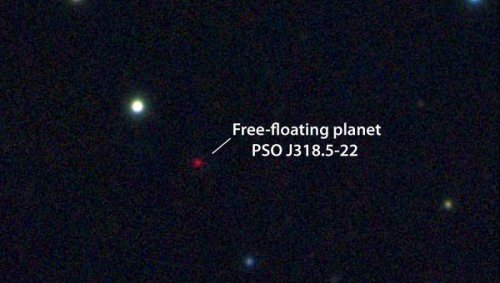Week’s Catch: A Lone Planet and Near Earth Asteroid
The end of the week was marked by the discovery of two interesting new bodies in space. The first, and in some ways most compelling was that of an isolated planet, bereft of a companion star, drifting alone through the cosmos at a relatively close distance of 80 light years away from Earth. The planet, which has been given the designation PSO J318.5-22, is estimated to be six times the size of Jupiter, was discovered by astronomers at the University of Hawaii’s Institute for Astronomy using the Pan-STARRS 1 telescope on Haleakala, Maui. Discovered during a search for ultra-dim brown dwarf stars, the newfound planet was directly imaged, a feat made possible precisely because it is alone, and not erased in the glare of a much brighter companion star. One prediction, nature rarely does something once. It’s a fair bet that once having discovered that such isolated bodies exist, more discoveries will be forthcoming, and its a class of space bodies which call for a name as enigmatic as they seem to be. It is also a reminder of just much work is still being accomplished by terrestrial based telescopes. The complete story can be found here.
The second discovery, of a relatively large Near Earth Asteroid, also comes from a terrestrial telescope, this one in New Mexico, but oddly enough run by Russians. After getting the blame for pretty much wiping out all of the world’s LEO space assets in “Gravity,” its a wonder they’re still willing to help. But then again, given that nation’s proclivity for attracting wayfaring space objects, maybe its a matter of vested interest.
Although the asteroid, 2013 TB80, is estimated to be quite large, anywhere from 6 to 18 times larger than the infamous 1908 Tunguska asteroid, its orbit poses no threat to Earth. But might it pose a benefit?
What is not revealed in initial press reports is the asteroid’s actual orbit, and most importantly its relative accessibility from Earth. Although NASA has encountered serious opposition to its own proposed Asteroid Retrieval Mission, for which this would be far too large, each discovery of a NEA whose orbit allows it to be reached with minimal change in velocity and on a reasonable time scale, adds to the list of possible candidates for deep space resource extraction ventures which are beginning to seem increasingly likely to move from concept to reality.


